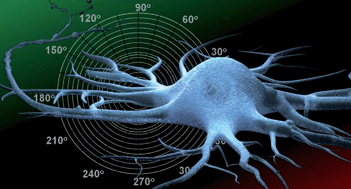Guiding neuron development with planar surface gradients of substrate cues deposited using microfluidic devices†
Abstract
Wiring the nervous system relies on the interplay of intrinsic and extrinsic

* Corresponding authors
a
Department of Cell and Developmental Biology, University of Illinois at Urbana-Champaign, Urbana, IL, USA
E-mail:
mgillett@illinois.edu
Tel: +1-217-244-1355
b
Department of Chemistry and the Frederick Seitz Materials Research Laboratory, University of Illinois at Urbana-Champaign, Urbana, IL, USA
E-mail:
r-nuzzo@illinois.edu
Wiring the nervous system relies on the interplay of intrinsic and extrinsic

 Please wait while we load your content...
Something went wrong. Try again?
Please wait while we load your content...
Something went wrong. Try again?
L. J. Millet, M. E. Stewart, R. G. Nuzzo and M. U. Gillette, Lab Chip, 2010, 10, 1525 DOI: 10.1039/C001552K
To request permission to reproduce material from this article, please go to the Copyright Clearance Center request page.
If you are an author contributing to an RSC publication, you do not need to request permission provided correct acknowledgement is given.
If you are the author of this article, you do not need to request permission to reproduce figures and diagrams provided correct acknowledgement is given. If you want to reproduce the whole article in a third-party publication (excluding your thesis/dissertation for which permission is not required) please go to the Copyright Clearance Center request page.
Read more about how to correctly acknowledge RSC content.
 Fetching data from CrossRef.
Fetching data from CrossRef.
This may take some time to load.
Loading related content
